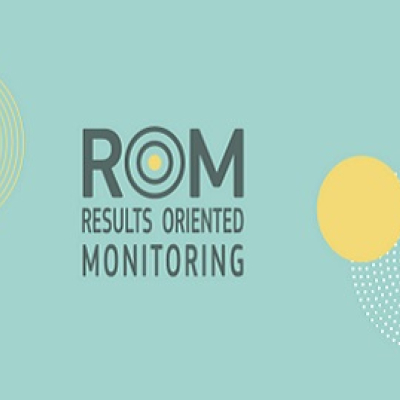The EUTF, established in 2015, was designed to address the root causes of irregular migration and displacement across the African continent. In the North of Africa window, its strategic focus has covered a wide range of priorities:
-
the protection of vulnerable migrants, asylum-seekers and refugees;
-
the support to integrated border management and the fight against smuggling and trafficking in human beings;
-
the enhancement of labour migration governance and mobility frameworks;
-
the strengthening of migration governance and voluntary return and reintegration mechanisms.
Operating in a region shaped by protracted crises, shifting mobility patterns and fragile institutional environments, the EUTF has committed over EUR 900 million in North of Africa through more than 100 operational and technical support contracts. This represents a significant policy and financial effort, and a considerable challenge in terms of assessing the relevance, sustainability and effectiveness of its interventions.1
Outcome Harvesting: an overview
In such fragile and fluid contexts, traditional monitoring frameworks tend to focus on tracking implementation and measuring outputs, which are necessary but insufficient for understanding the broader transformations that interventions contribute to. The Monitoring and Learning System for the EUTF in North Africa has therefore introduced Outcome Harvesting (OH) as a complementary and adaptive methodology. Its primary purpose is to generate systematic, evidence-based information on what has changed as a result of EU-funded actions, beyond the immediate deliverables. OH is not an approach based on pre-defined indicators, as it focuses on identifying observable (planned or unexpected) short- to medium-term changes that occurred during the implementation and then analysing how, and to what extent, a given project or stakeholder contributed to them. These changes can relate to practices, actions, policies or relationships, and they concern social actors such as local authorities, civil society organisations, national institutions, migrants, refugees, or host communities.
As a novel component within the EUTF’s monitoring framework, OH is being implemented gradually, combining a pilot stage with a scaling-up approach. The initial application, carried out in 2024, focused on a cohort of 38 completed contracts and served as a foundational exercise to test the methodology, assess its feasibility, and generate an initial body of evidence. This first experience fed the design and development of the new phases, which will progressively cover the rest of the EUTF portfolio in 2025 and 2026.
The process includes a thorough review of available documentation, complemented by participatory validation processes and direct engagement with EUTF partners. Each outcome is defined and analysed using a structured format that includes:
-
a factual description of the change,
-
its significance in relation to the strategic priorities of the Trust Fund,
-
the specific contribution of the intervention, and
-
the robustness of the evidence supporting the finding.
As a result of this first set of contracts, 148 validated outcomes were identified across Libya, Tunisia, Morocco and the regional scale, covering a broad spectrum of change. Many involved improvements in local service delivery, enhanced institutional practices, or the development of new coordination mechanisms. Others documented transformations in beneficiary behaviour, the launch of community-based initiatives, or the adoption of new legal or operational frameworks.
A significant proportion of these results reflected changes in practices and actions, particularly in local institutions, NGOs, and community actors who had directly participated in capacity-building or technical support components. Though less frequent, outcomes related to policy or relationship shifts were particularly relevant from a strategic point of view, as they illustrated sustained changes in how migration governance is structured, managed and maintained.
The added value of Outcome Harvesting
A key added value of the OH methodology is its ability to capture outcomes that would otherwise remain undocumented. In many cases, these were changes not originally foreseen in project logframes, but which emerged as a result of adaptive processes and interaction between multiple stakeholders. This is particularly important in volatile, sensitive or rapidly changing environments, where outcomes often stem from the ability of interventions to respond to emerging needs and opportunities. By adopting a flexible, context-oriented and evidence-based approach, this methodology complements conventional monitoring with a deeper understanding of the real effects of interventions. It also reinforces the principle that accountability and learning are not mutually exclusive but interconnected.
The analytical potential of the information generated is also substantial. The classification and pattern analysis of outcomes has provided the EUTF with insights into:
-
where and how change is most likely to occur,
-
which types of interventions tend to produce sustained results, and
-
which social actors play a critical role in translating resources into meaningful improvements.
The systematic nature of the OH process enabled a detailed mapping of outcome distribution by sector, geographic focus, and level of sustainability, offering concrete findings, insights and lessons learnt for the design of future projects and funding instruments.
It is important to highlight that the credibility of the exercise lies in the systematic use of triangulated evidence.2 Each outcome is supported by documentation, interviews and independent validation, and assigned a level of confidence. Over 80% of the outcomes analysed were backed by medium to high-quality sources, confirming the methodological robustness of the process. The results are not only reliable but also relevant for informing upcoming programming cycles and strategic decisions.
Concluding thoughts
Importantly, Outcome Harvesting is not a standalone evaluation technique, but a component of a broader learning strategy. It complements existing data systems, contributes to results-based management, and supports continuous feedback loops between implementation and policy. Its integration into the EUTF's Monitoring and Learning System has demonstrated that meaningful outcome-level analysis is feasible even in operationally demanding contexts, provided that it is methodologically sound, participatory, and well adapted to regional and national realities.
In summary, the implementation of OH in the EUTF North Africa window represents an innovative and fruitful experience that complements regular monitoring and evaluation techniques and tools. It allows for a more accurate and nuanced understanding of change, particularly in contexts where rigid indicator systems fall short. Its application in the framework of the Trust Fund reinforces the EU’s commitment to informed, participatory and evidence-based cooperation in migration and development and the information obtained has already begun to feed into internal discussions and institutional learning strategies.
1 For more information, please check the annual monitoring report for 2024.
2 “Triangulation is a method used to increase the credibility and validity of research findings. Credibility refers to trustworthiness and how believable a study is; validity is concerned with the extent to which a study accurately reflects or evaluates the concept or ideas being investigated. Triangulation, by combining theories, methods or observers in a research study, can help ensure that fundamental biases arising from the use of a single method or a single observer are overcome. Triangulation is also an effort to help explore and explain complex human behaviour using a variety of methods to offer a more balanced explanation to readers. It is a procedure that enables validation of data and can be used in both quantitative and qualitative studies.” (https://ebn.bmj.com/content/22/3/67)









Log in with your EU Login account to post or comment on the platform.